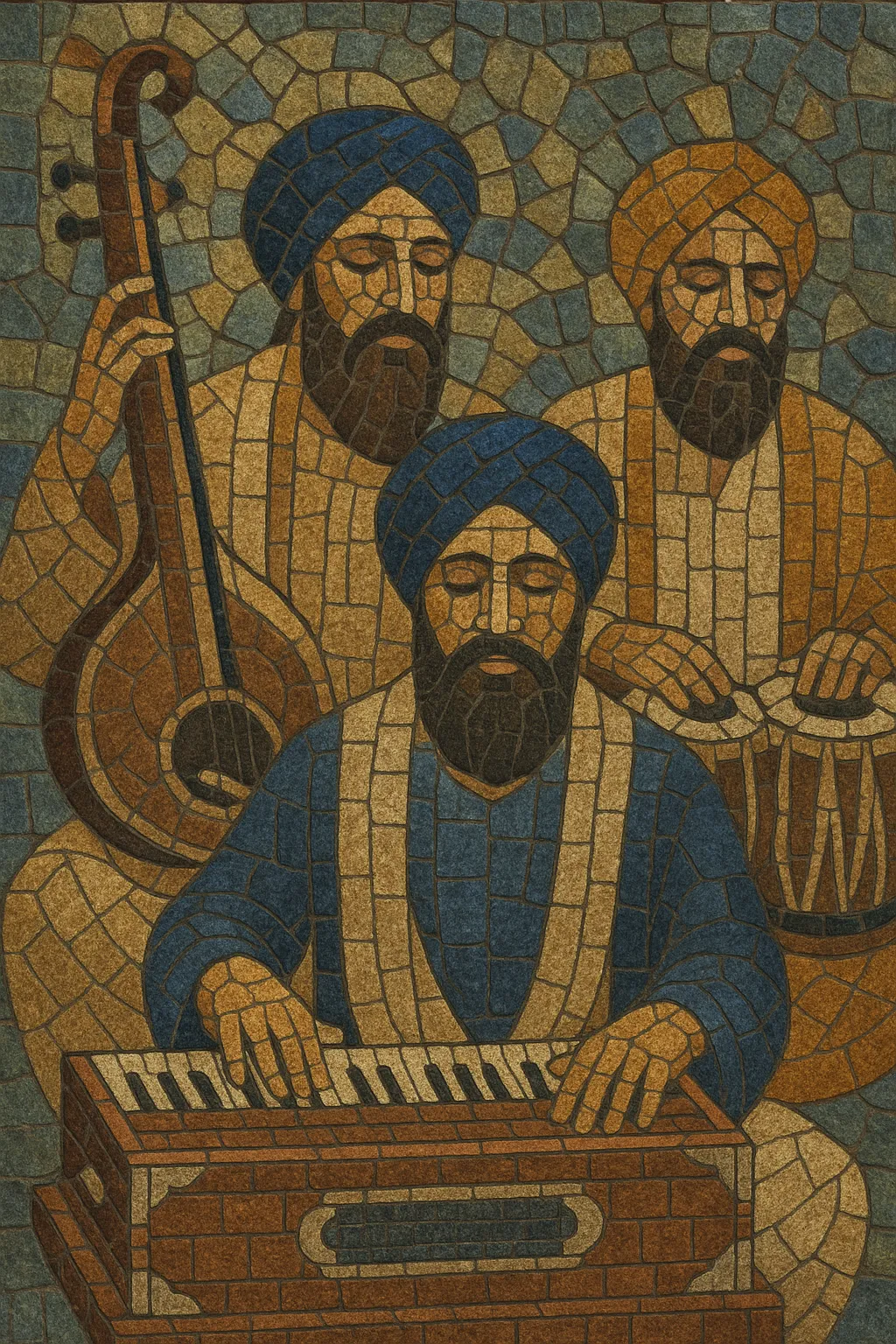Shabad Kirtan is the Sikh devotional tradition of singing scriptural hymns (shabad) from the Guru Granth Sahib to prescribed North Indian raags and taals. It is a congregational, call‑and‑response practice that emphasizes meditation on the Divine Name (Naam) and contemplation of the hymn’s central refrain (rahāo).
Historically rooted in the Punjab, Shabad Kirtan blends the aesthetics and pedagogy of Hindustani classical music with a distinct Sikh spiritual and textual framework. Performances range from austere, dhrupad‑inflected renditions with traditional instruments (rabab, taus, dilruba, saranda, jori) to contemporary harmonium‑and‑tabla settings designed for sangats (congregations) worldwide.
Shabad Kirtan emerged with the Sikh Gurus in the Punjab beginning in the 1500s. Guru Nanak (1469–1539) sang his revelations accompanied by the rabab (played by Bhai Mardana), establishing a sung, congregational mode of devotion. The Gurus composed hymns with explicit musical directives—assigning specific raags and, at times, taals—to guide how the scripture should be rendered.
In 1604, Guru Arjan compiled the Adi Granth (later Guru Granth Sahib), organizing hymns under 31 main raags (and sub‑raags). This codification anchored Shabad Kirtan to Hindustani classical grammar while cultivating a uniquely Sikh liturgical repertoire (e.g., Asa di Vār at dawn, Anand Sahib). Early practice drew on dhrupad aesthetics and pakhāwaj/jori percussion; later centuries saw the adoption of harmonium and tabla, especially under colonial modernity.
Traditional Sikh instruments—taus, dilruba, saranda, rabab—and the jori coexisted with evolving performance practice. Rababi and ragi lineages preserved melodic and poetic interpretation, paying close attention to the rahāo (central thematic verse) and correct shudh ucharan (pronunciation) of Gurmukhi.
In the 20th and 21st centuries, Shabad Kirtan spread with the Punjabi and Sikh diaspora, leading to studio recordings, radio/streaming broadcasts, and concert hall presentations. Some ensembles revived puratan (older) instruments and taals; others embraced accessible harmonium‑tabla formats and choir‑like congregational singing. Today, Shabad Kirtan continues both as a liturgical art within gurdwaras and as a concert tradition influencing global devotional and fusion scenes.


